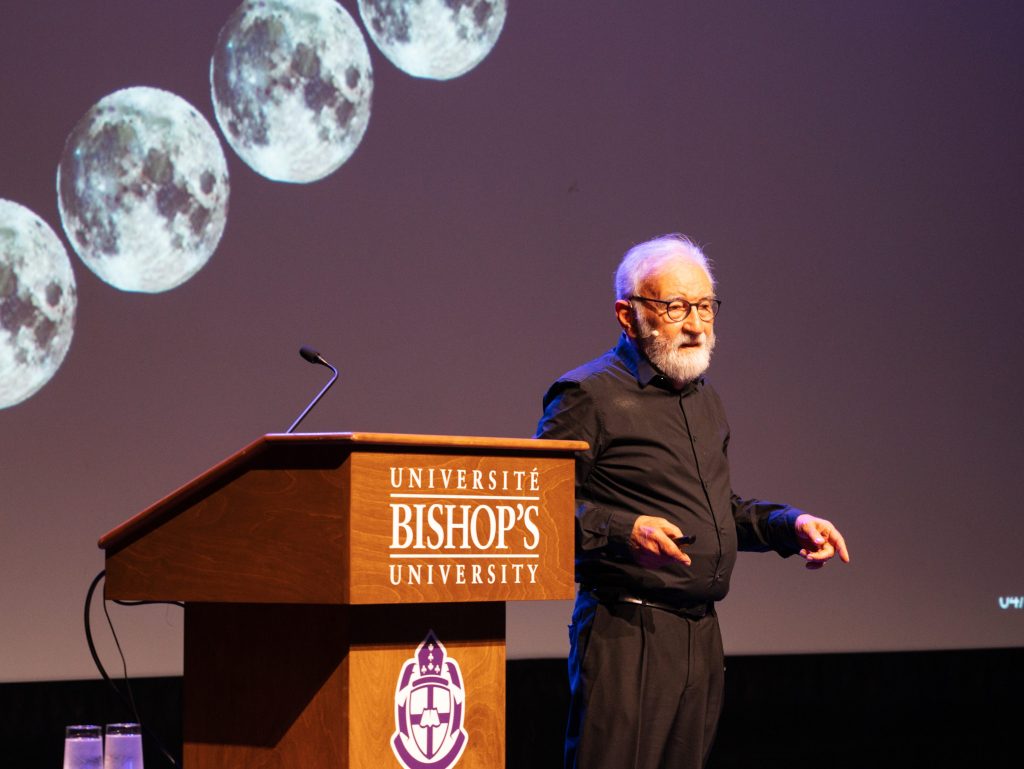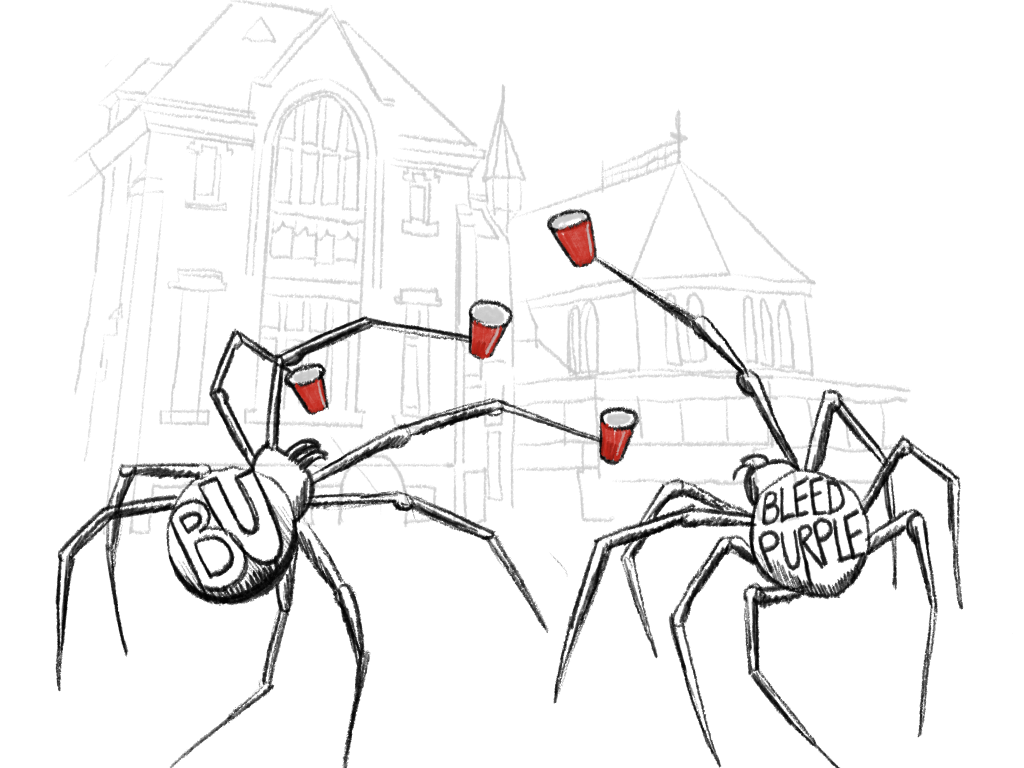By Abigail Epstein – Contributor
Four days prior to the April 8 eclipse, Bishop’s University welcomed Prof. Jean-Louis Heudier to the stage as the most recent guest of the Donald Lecture Series. An internationally acclaimed astronomer from France, Heudier’s long career includes a vice-presidency at the Côte d’Azur Observatory and numerous publications, including Fantastic Eclipses, From Fear to Reason in 2023. Heudier’s lecture explained the science of the eclipse, present and historic fascination of the phenomenon and how eclipses have augmented human self-understanding along the way.

Heudier began with the technicalities of eclipses. For a solar eclipse, as the moon crosses the plane between the earth and the sun, it casts a shadow in the path of totality which tracks total darkness across Earth – what will be seen on April 8. While solar eclipses themselves are not uncommon, it is rare for one to occur over the span of North America from Sinaloa, Mexico to Newfoundland, Canada. In addition, this eclipse’s totality is particularly long – in Lennoxville, darkness lasts just under three and a half minutes.
Heudier then described what has been learned from eclipses of the past. Eclipses revealed information about the distance between the earth, moon, sun and planets well before advanced technology. In the 17th and 18th centuries, scientists learned how to better observe the sky – the “beginning of good science for the eclipse,” as put by Heudier. Thus, with the golden age of eclipses, scientists discovered the gradual slowing of the earth’s rotation. Scientists also studied the outermost layer of the sun’s atmosphere: the corona, which can be seen around the silhouette of the moon during totality, otherwise hidden from view by daylight.
Heudier’s also touched on the human significance of eclipses – how eclipses have been used in storytelling and have magnified our understanding of the world. Early art pieces such as Peter Paul Ruben’s The Coup de Lance features an eclipse behind the crucifixion of Christ. Christopher Columbus used his knowledge of the March 1504 lunar eclipse to trick the Indigenous Peoples of modern-day Jamaica into providing amenities for his crew. In the 1846 The Adventures of Tintin: Prisoners of the Sun, the solar eclipse saves Tintin and his friends from certain death. Heudier remarked that now, with this April 8 eclipse, scientists will gain new understanding of the earth’s slowing rotation and its trajectory, as well as how factors like climate change and the gravitational fields of meteors have influenced its movement.
Senior physics students Joshua Aiken and Joe Bardwell agree that it is a “life changing event” to experience a total solar eclipse and that “we’re fortunate to witness an eclipse like this.” Today, Bishop’s is hosting an event which welcomes people from around the area to witness the eclipse in its path of totality amongst family, friends, students and experts. It is a profoundly human moment in the long tradition of the sun, the moon, the earth – and the people who seek to understand.




